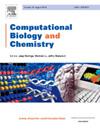PLM-IL4: Enhancing IL-4-inducing peptide prediction with protein language model
IF 2.6
4区 生物学
Q2 BIOLOGY
引用次数: 0
Abstract
Despite progress in developing antiviral drugs and vaccines, infections continue to be a significant challenge. Interleukin-4 (IL-4) is crucial for regulating immune responses and mediating allergic reactions. This research aims to improve the predictive accuracy of IL-4-inducing peptides by tackling data imbalance and enhancing feature extraction. Specifically, we introduce a new approach that utilizes SMOTE and ENN for balancing the dataset and applies a 30-layer ESM-2 model for extracting deep features. The extracted features are subsequently processed through a Gated Recurrent Unit (GRU) model, which is optimized through hyperparameter tuning. Our method achieves notable improvements, with an AUC of 0.98 and an accuracy of 93.1 %, highlighting its potential to support future immunotherapy and vaccine development efforts. The PLM-IL4 web server is freely accessible at http://www.bioai-lab.com/PLM-IL4, and the datasets used in this research are also available for download from the website.
PLM-IL4:用蛋白语言模型增强il -4诱导肽预测
尽管在开发抗病毒药物和疫苗方面取得了进展,但感染仍然是一个重大挑战。白细胞介素-4 (IL-4)在调节免疫反应和介导过敏反应中起着至关重要的作用。本研究旨在通过解决数据不平衡和增强特征提取来提高il -4诱导肽的预测准确性。具体来说,我们引入了一种新的方法,利用SMOTE和ENN来平衡数据集,并应用30层ESM-2模型来提取深度特征。提取的特征随后通过门控循环单元(GRU)模型进行处理,该模型通过超参数调谐进行优化。我们的方法取得了显著的改进,AUC为0.98,准确率为93.1 %,突出了其支持未来免疫治疗和疫苗开发工作的潜力。PLM-IL4 web服务器可在http://www.bioai-lab.com/PLM-IL4免费访问,本研究中使用的数据集也可从该网站下载。
本文章由计算机程序翻译,如有差异,请以英文原文为准。
求助全文
约1分钟内获得全文
求助全文
来源期刊

Computational Biology and Chemistry
生物-计算机:跨学科应用
CiteScore
6.10
自引率
3.20%
发文量
142
审稿时长
24 days
期刊介绍:
Computational Biology and Chemistry publishes original research papers and review articles in all areas of computational life sciences. High quality research contributions with a major computational component in the areas of nucleic acid and protein sequence research, molecular evolution, molecular genetics (functional genomics and proteomics), theory and practice of either biology-specific or chemical-biology-specific modeling, and structural biology of nucleic acids and proteins are particularly welcome. Exceptionally high quality research work in bioinformatics, systems biology, ecology, computational pharmacology, metabolism, biomedical engineering, epidemiology, and statistical genetics will also be considered.
Given their inherent uncertainty, protein modeling and molecular docking studies should be thoroughly validated. In the absence of experimental results for validation, the use of molecular dynamics simulations along with detailed free energy calculations, for example, should be used as complementary techniques to support the major conclusions. Submissions of premature modeling exercises without additional biological insights will not be considered.
Review articles will generally be commissioned by the editors and should not be submitted to the journal without explicit invitation. However prospective authors are welcome to send a brief (one to three pages) synopsis, which will be evaluated by the editors.
 求助内容:
求助内容: 应助结果提醒方式:
应助结果提醒方式:


